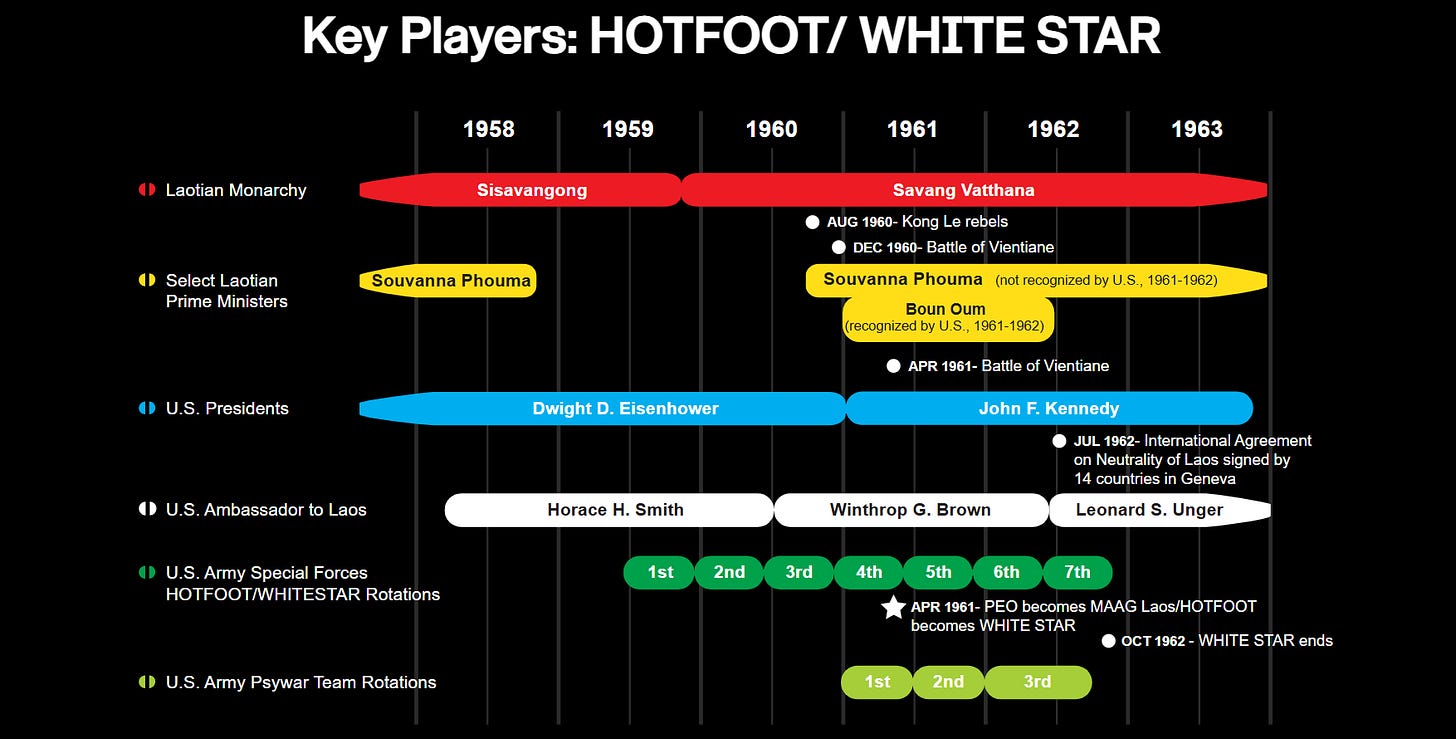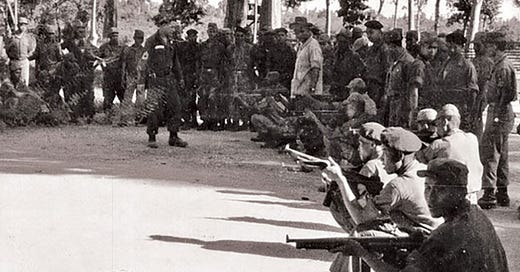
OPERATION HOTFOOT, aka “Project Hotfoot” and originally known as OPERATION AMBIDEXTROUS, was a secretive military training mission from the United States in support of the Kingdom of Laos. It ran from January 22, 1959, to April 19, 1961, as part of the Laotian Civil War, Vietnam War, and Cold War in Indochina. The operation was planned by John A. Heintges, Commander in Chief, Pacific (CINCPAC), and commanded by notable figures such as Donald Blackburn, Arthur D. Simons, and Andrew J. Boyle.
The primary objective was to train soldiers in the Royal Lao Army, cooperating with French military training teams, to counter the communist Pathet Lao and North Vietnamese forces. This was driven by the broader U.S. strategy to prevent communist expansion in Southeast Asia, particularly after the Vietnamese Communist revolutionists invaded Laos in March 1953, occupying areas that would become the Ho Chi Minh Trail.
The operation involved deploying 12 Special Forces Mobile Training Teams, each consisting of 8 men, plus a control team of 11, totaling 107 men. These teams arrived in Vientiane on July 24, 1959, and set up training centers in Luang Prabang, Savannakhet, Pakse, and Vientiane, with additional facilities at Kilometer 22 and Kilometer 17 on Route 13. The training focused on the use of various weapons, including the M1 Garand, Browning Automatic Rifle, M1 Carbine, bazooka, M18 recoilless rifle, and 60mm and 81mm mortars.
Due to Laos’s official neutrality, U.S. soldiers wore civilian clothing and carried Department of Defense (DoD) civil service ID cards, using a cover story as part of the United States Coast and Geodetic Survey. Their orders stated their destination as Vietnam to maintain secrecy. Language preparation was crucial, with team members receiving tutoring in French and Lao, and required reading included "Street Without Joy" and "The Ugly American" to understand the local context.
The operation saw several rotations, including HOTFOOT I (February 1960-), HOTFOOT II (June 29, 1960-), HOTFOOT III, and HOTFOOT V, which was renamed to OPERATION WHITE STAR on April 19, 1961.
Under President John F. Kennedy, the operation expanded on January 31, 1961, with a request for 9 more training teams, arriving staggered between March and May 1961. On April 19, 1961, the Programs Evaluation Office (PEO) became the Military Assistance Advisory Group (MAAG), allowing teams to resume wearing uniforms.

OPERATION HOTFOOT was conducted in conjunction with a French military mission, reflecting the shared interest in maintaining a non-communist Laos. However, the operation’s covert status was challenged by events like the Bay of Pigs Invasion in 1961, which influenced U.S. policy towards more overt military involvement, leading to the transition to OPERATION WHITE STAR. The operation ended following the Geneva Accords in July 1962, which declared Laos neutral and required the withdrawal of foreign troops, though its impact continued through successor operations.
After OPERATION HOTFOOT ended, its efforts were continued under OPERATION WHITE STAR, which saw increased U.S. military presence and further training of Laotian forces. The operation’s techniques, such as forming and leading indigenous forces, influenced later U.S. Special Forces counterinsurgency strategies, including OPERATION PINCUSHION.




